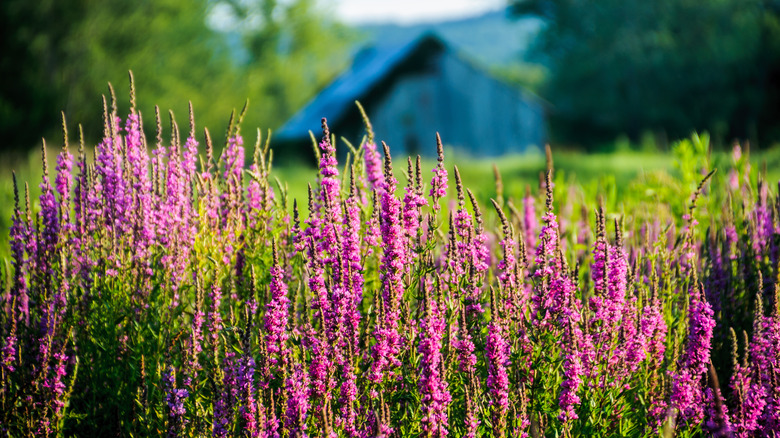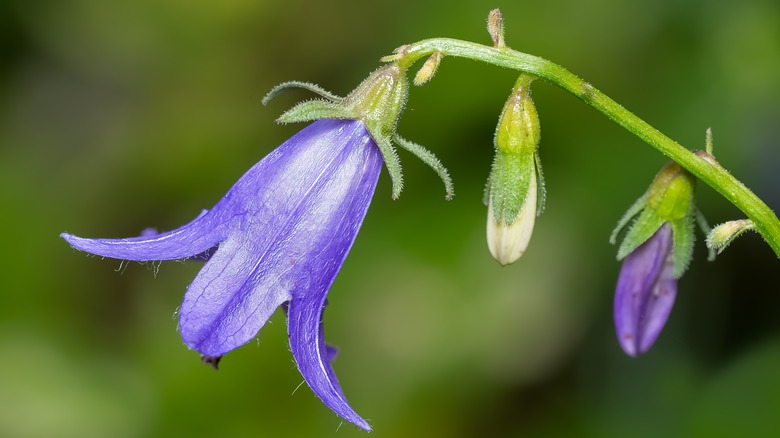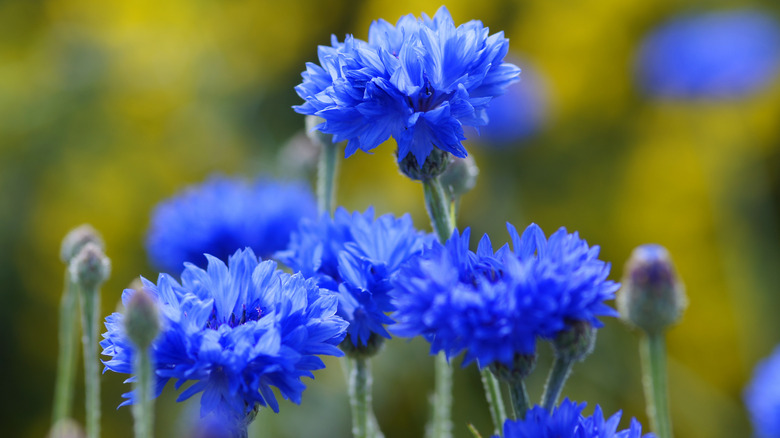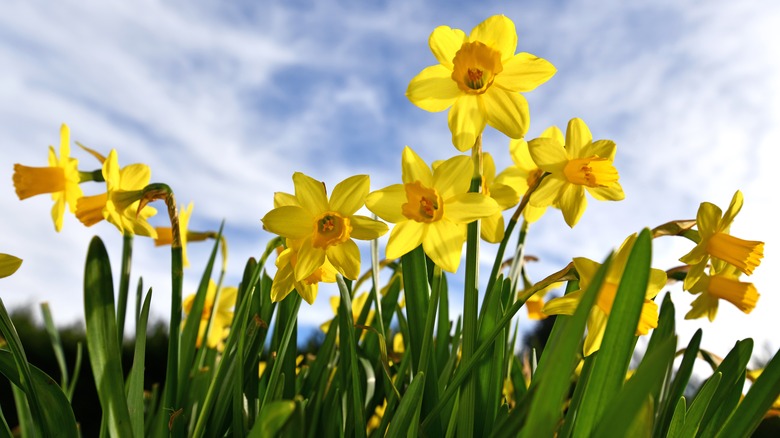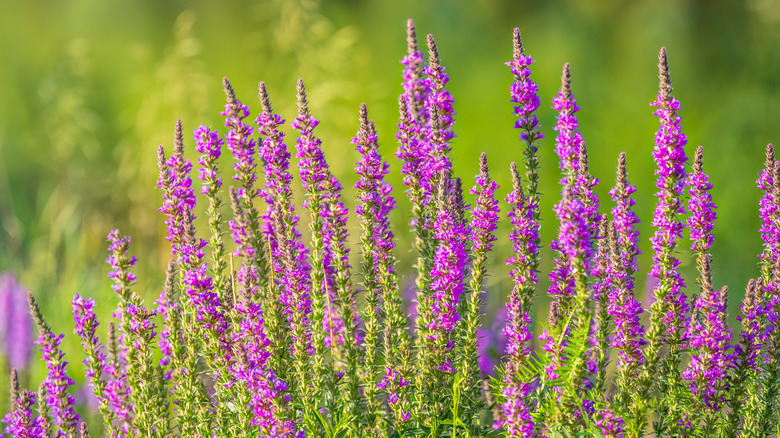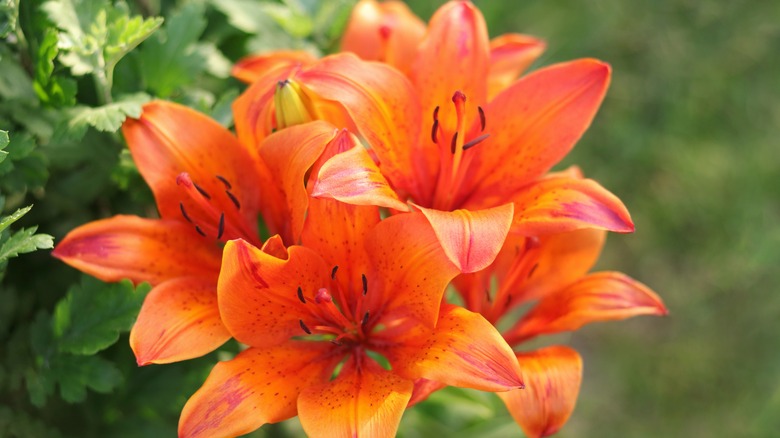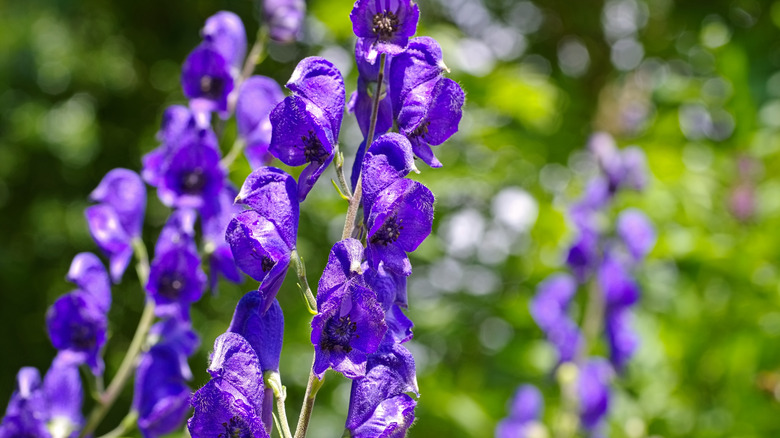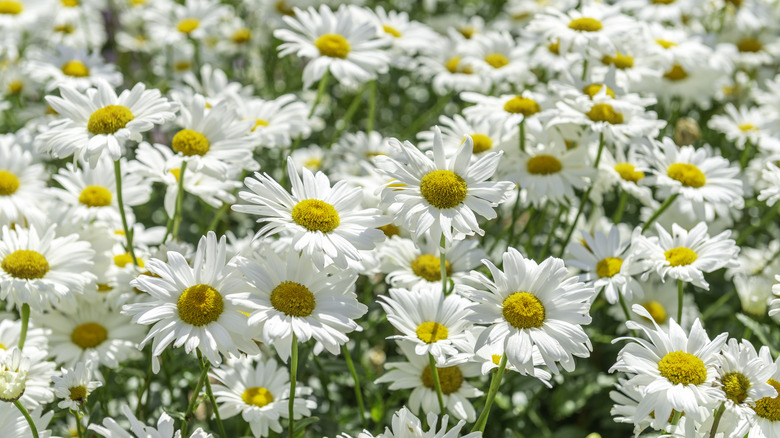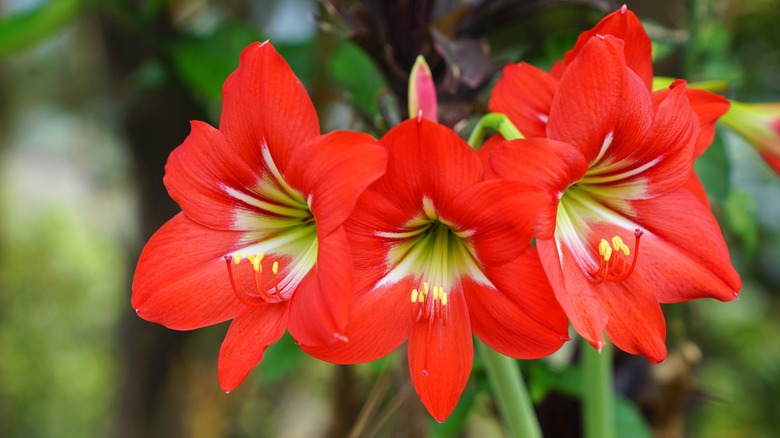8 Stunning Flowers You'll Immediately Regret Growing In Your Yard & Garden
Many people long for a vibrant and colorful garden filled with gorgeous flowers. There is something very satisfying about looking out at your own garden and marveling at how your hard work tending to it has paid off. However, with flowers, some looks can be a bit misleading. There are several flowers that, while absolutely stunning, may be something you'll quickly regret planting in your yard or garden.
Some flowers could end up invading your whole yard, stealing nutrients from the other plants you wish to grow. While you might like the way these flowers look, do you really want to only see them, and nothing else, when looking at your garden? Other flowers may look pretty, but actually pose a serious threat to people, pets, and wildlife. Learning about some of these flowers can help you make informed decisions about what to grow in your garden and ensure you don't make a mistake that you end up regretting.
Creeping bellflower is invasive and may take over your yard
Campanula rapunculoides, more commonly known as creeping bellflower, grows tall and proud and features gorgeous bell-shaped blooms. At first glance, the flower's beauty is something you may think would make the perfect addition to your yard or garden. However, if you were to plant this weed (yes, it's a weed!), you'd surely regret it almost immediately.
You see, creeping bellflower can be very invasive. So, if you plant a few "flowers" in your garden, it will quickly spread and take over anywhere it can reach. Beyond spreading to any open areas, the weed will also steal much-needed nutrients from the other flowers in your garden, effectively choking them out and replacing them. Doesn't sound so nice anymore, does it?
Moreover, if you make the mistake of adding creeping bellflower to your yard or garden, it can be exceedingly difficult to get rid of. If you want to try to dig the weed up, you must be careful to get all of the roots, otherwise it will just grow right back and start spreading again. Smothering it may also work, but it is an involved process that requires cutting the weed back and covering it with several layers of mulch and newspaper or tarps. You'll then need to leave it covered for a few months, which can take away from your ability to enjoy your garden or grow anything else.
Avoid planting blue cornflower unless you want it to eliminate your other plants
Blue cornflower, which is often called bachelor's buttons, offers puffy blooms that resemble blue pom-poms. The "pom-poms" are made up of several smaller bell-shaped flowers, giving the plant a unique and interesting appearance. However, appearances can be deceiving. And, blue cornflower is another pretty flower that you shouldn't be fooled by.
It can be very invasive, generating lots of seeds that will allow it to spread across your yard and garden. As it spreads, it will take over open spaces and get rid of other plants — or crops — that stand in the way. Seeds for this wildflower can also be included in different seed mixes, so be sure to always check the label. Sometimes, its seeds may also get inadvertently mixed in with seeds for crops, which can present a serious challenge. As the wildflowers spread, they can prevent the wanted crops from being able to grow, reducing the overall yield.
Whether you purposefully planted blue cornflower (and then came to regret that decision) or it inadvertently invaded your space, you'll want to act quickly to remove it before you face more serious issues. Try pulling any weeds you see, taking care to get the root system completely out of the ground. If you want to use a chemical herbicide, they will be the most effective when the flowers are still in the rosette stage.
Daffodils can be toxic to people and animals
Unlike many of the other flowers on this list, daffodils are not considered an invasive species. However, if you have children or pets, you might want to think twice about planting daffodils in your garden. Despite their gorgeous appearance, daffodils can cause serious harm to people or animals if they are eaten. All parts of the flower are considered toxic, with the bulb being the most dangerous. The chemical that makes daffodils poisonous is called lycorine. Moreover, oxalate, another chemical compound, are also found in the bulb.
If a child or pet ingests daffodils, they may experience serious side effects, such as vomiting, diarrhea, or pain in the abdomen. Consuming larger quantities can be more dangerous, and may result in tremors, low blood pressure, or even heart arrhythmia. If a child or pet eats a daffodil, reach out to a medical professional. Try to gauge just how much of the plant they consumed so the doctor or veterinarian will be able to decide on the best treatment plan.
Once you plant purple loosestrife, you may never be able to get rid of it
While purple loosestrife looks like a vibrant purple flower, it is actually a weed. And, as if being a weed wasn't bad enough, it is particularly invasive and difficult to get rid of. Purple loosestrife grows tall — we're talking even up to 10 feet — with several pretty flowers coming off the tall stem. Don't let yourself be fooled by its beauty, though. If you plant purple loosestrife in your garden, it can quickly take over. The weed is competitive, and pulls nutrients from native plants, eventually causing them to die.
Purple loosestrife is one of those perennials that may never leave your garden if you don't act quickly and decisively. At the first sign of the weed, begin pulling the entire thing — root system and all — out of the ground. Some beetle species have also been successfully used to control infestations of purple loosestrife, but this isn't likely something you'd want to try in your home garden.
Tiger lilies may be pretty, but they spread quickly
If you're looking to attract pollinators, such as bees and butterflies, to your home garden, you might be thinking of planting some tiger lilies. However, as beautiful as these (often) orange flowers are, there are a few downsides to planting tiger lilies in your garden that you'll want to consider before proceeding. Tiger lilies are not a native plant to North America. While they can be quite prevalent in many areas, they originated from Asia. And, when introduced to your home garden, the tiger lily may start taking over all of the available space.
This is because tiger lilies are another example of an invasive plant. You may find that it spreads quickly, and takes over any space in your yard or garden it can find. While invasive, tiger lilies may not be quite as extreme as some of the other flowers on this list. As a bulb-type flower, they can be more easily removed and kept at bay than other flowers or weeds with more extensive root systems.
Monkshood is poisonous and may threaten your nervous system
While some plants are only slightly toxic or a threat to some animals, monkshood is highly poisonous and is something you definitely won't want to add to your home garden. However, if you don't know what you're looking at, it may be easy to get tricked by the pretty flower's appearance. Monkshood is a tall-growing plant with lobed leaves and flowers that grow in clusters. The plant earned its name from the helmet- or hood-like shape of each flower.
If you haven't heard of monkshood before, you may be more familiar with the other name this plant goes by: wolfsbane. Among other toxins, monkshood contains aconitine. In addition to threatening the heart, this toxic chemical can also harm one's nervous system. Poisoning can be very serious, potentially resulting in death. Some other potential symptoms include chest or abdominal pain, dizziness, diarrhea, nausea, shortness of breath, vomiting, or changes in heart rhythm.
Ox-eye daisies are invasive and probably best kept out of the garden
Daisies are beautiful flowers that can make a wonderful addition to your garden. Some varieties of daisies, that is. While many daisy varieties are not invasive, some, such as ox-eye daisies, are. Don't let yourself be taken in by their beautiful appearance. The flowers have a classic daisy look, with long white petals and a central, yellow pistol. This flower is highly invasive and will quickly spread throughout your yard and garden. Beyond simply taking up any open space, the plant grows in very densely, pushing out your existing flowers and crops.
Like many other invasive plants, once ox-eye daisies have taken hold in your yard, they can wreak havoc. If even a portion of the rhizome is left behind after weeding and pulling, new plants will quickly start reproducing. When you couple this with the fact that a single flower head generates as many as 200 seeds, it is easy to see how quickly you could be dealing with a major invasion.
If you have pets, you might want to rethink planting amaryllis flowers
Amaryllis is a gorgeous flower which is often associated with Christmas. The flowers, which are shaped like trumpets, are typically deep red, though they may also be other colors, such as white, pink, or light orange. The problem? The plant with its stunning blooms is also toxic to people and animals. Lycorine, the toxin in the plant, has the highest concentrations in the bulb, similar to daffodils. However, it is present throughout the entire plant, so consuming any portion of it can be dangerous. Humans or animals that consume amaryllis may suffer from nausea, diarrhea, vomiting, or tremors.
So, whether you have young children or pets or just want to make sure you avoid planting toxic plants when trying to attract birds to your yard, the best choice is probably to just steer clear of amaryllis. With so many other pretty flowers that aren't toxic, it is easy to make a much safer choice.

